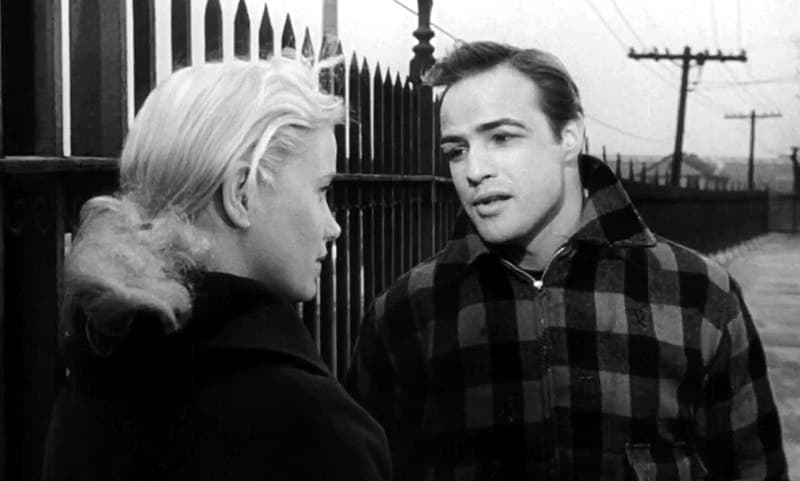Glimpses of Hollywood of Old, and of Today
A zesty new novel and recent books involving the likes of Marlon Brando, Joan Crawford, and a silent film actress who died young shine light on Tinseltown’s inner workings.

‘Cast Aside — With Bushman at the Unmaking of “Ben Hur” in Italy’
By John W. Harding
BearManor Media 286 pages
‘Butterflies in the Rain: A Tale of Old Hollywood — The Life, Art, and Tragic Death of Silent Film Starlet, Regina Doyle’
By Stephen Brown
BearManor Media, 524 pages
‘Catholic Girl: The Life and Times of Mabel Normand’
By Sean Crose
BearManor Media, 318 pages
‘Joan Crawford in Film Noir: The Actress as Auteur’
By David Meuel
McFarland, 225 pages
‘Marlon Brando: Hollywood Rebel’
By Burt Kearns
Applause Books, 296 pages
A matinee idol by 1911, Francis X. Bushman appeared in as many as 20 films a year, but his career verged on collapse before his huge starring role in “Ben Hur” (1925), deemed by the National Film Registry of the Library of Congress as “cultural, historically, or aesthetically significant.” After production problems in Italy, the film was parked in Hollywood, where the politics of Mussolini’s fascism would not pertain — or so it seems until the interventions of a studio mogul in John W. Harding’s zesty new novel.
Regina Doyle’s fate is one of those sad stories of old Hollywood. She died in a car crash at only 24 and on the verge of stardom. Stephen Brown makes his research a focal point, as he turns Doyle into a kind of Sister Carrie character in the “never-never land” of Hollywood. The biographer’s visits to the sites of his subject’s near-ascent to stardom and death provide fascinating glimpses of Hollywood then and now.
Mabel Normand teaches Charlie Chaplin a trick or two in a biography that features chapters on Chaplin, Samuel Goldwyn, Mary Pickford, Hal Roach, Mack Sennett, and other Hollywood greats. She appeared in many films with Chaplin, but she is as well known for her involvement in the famous Hollywood scandals involving the suspicious deaths of a director, William Desmond Taylor, and a star, Fatty Arbuckle, accused of rape and manslaughter. As Sean Crose’s title suggests, though, Normand had an integrity and sense of charity informed by her religious upbringing.
David Meuel insists that his book is not a biography, and yet by concentrating on how Joan Crawford chose and developed her roles in genre films, on her relationships with co-stars, directors, and producers, a biography emerges — sometimes simply in the way Mr. Meuel reports on her insistence, say, that Henry Fonda and Dana Andrews, two of Twentieth-Century Fox’s “biggest male stars,” appear with her in “Daisy Kenyon,” which catapulted the genre production into an A-list picture.
Mr. Meuel is correct that neither male star wanted to be subordinate to Crawford, but as I discovered in my own research, Andrews wanted Fonda’s role, since Fonda’s character wins Crawford love — much to the dismay of Andrews’s slick-talking lawyerly character. Crawford realized that if Fox cast second-tier stars to play against her, the film’s dramatic tension would slacken. The film needed a constellation of stars, and that’s where Crawford the “auteur” emerges.
Marlon Brando was hardly the first star to be thought of as a rebel in Hollywood, as Burt Kearns notes: “There were other actors who were surly with the press, who had their feuds with the big town gossip writers, but not so many who really didn’t seem to give a hoot, one way or another, about their image or Hollywood in general.” Mr. Kearns is right, but in terms of Hollywood history, his assessment could be refined.
One of the great Hollywood stars, Ronald Colman, really did not “give a hoot” either, but he nonetheless observed the protocols of treating the press courteously no matter how reluctant he felt about cooperating with Hollywood hoopla. He was the gentleman hero whom Brando virtually destroyed when he was asked in “The Wild One”: “What are you rebelling against?” He answered: “What do you got?”
In old Hollywood, Ronald Colman could break his contract with Samuel Goldwyn even if it meant being off-screen for a few years before lining up a new contract. Brando, on the other hand, heralded a generation of actors like Paul Newman, Jack Nicholson, and Robert DeNiro who not only broke Hollywood rules about the comportment of stars but changed Hollywood itself, so that nowadays what major star is not also named an executive producer in the credits?
Mr. Rollyson is the author of “Hollywood Enigma: Dana Andrews” and “Ronald Colman: Hollywood’s Gentleman Hero.”

